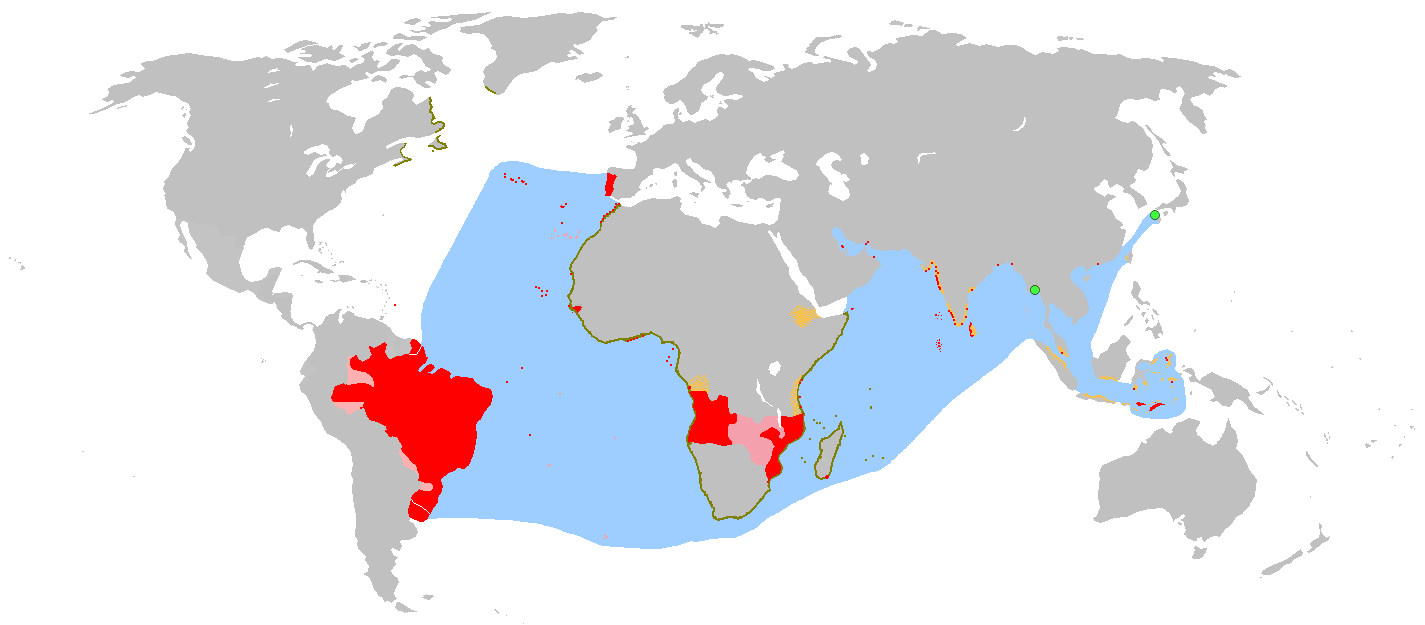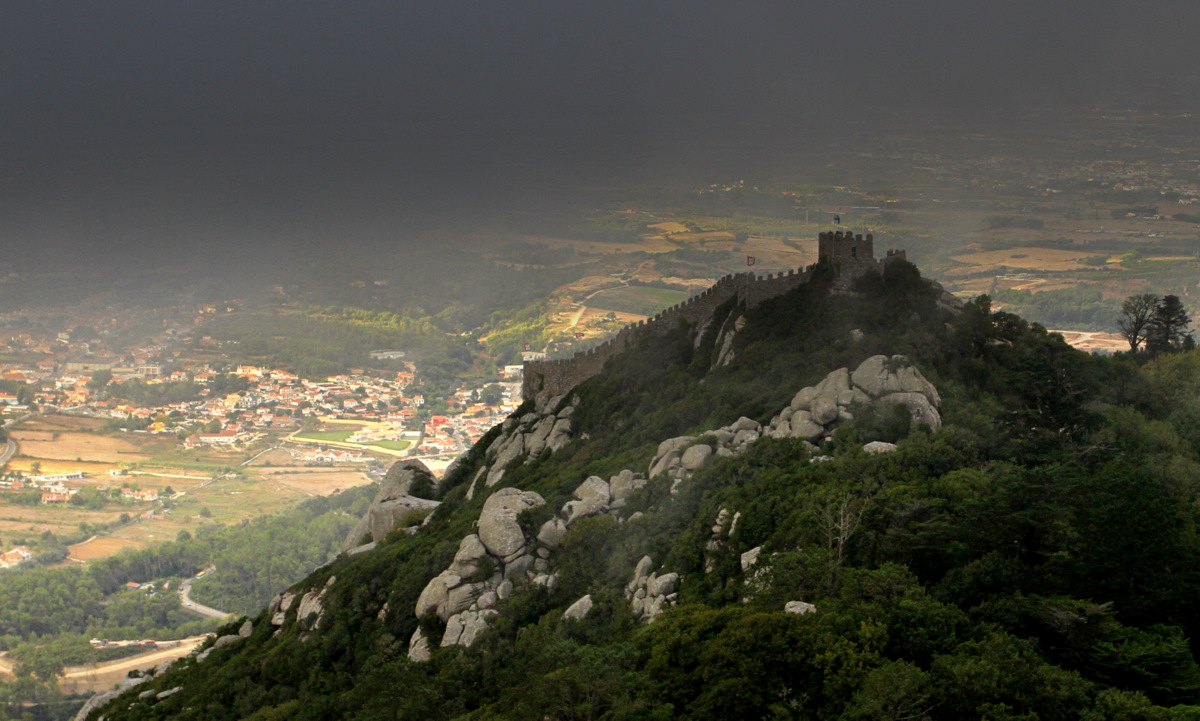|
Sintra Municipality
Sintra (, ) is a town and municipality in the Greater Lisbon region of Portugal, located on the Portuguese Riviera. The population of the municipality in 2011 was 377,835, in an area of . Sintra is one of the most urbanized and densely populated municipalities of Portugal. A major tourist destination famed for its picturesqueness, the municipality has several historic palaces, castles, scenic beaches, parks and gardens. The area includes the Sintra-Cascais Nature Park through which the Sintra Mountains run. The historic center of the ''Vila de Sintra'' is famous for its 19th-century Romanticist architecture, historic estates and villas, gardens, and royal palaces and castles, which resulted in the classification of the town as a UNESCO World Heritage Site. Sintra's landmarks include the medieval Castle of the Moors, the romanticist Pena National Palace and the Portuguese Renaissance Sintra National Palace. Sintra is one of the wealthiest municipalities in both Portugal and the ... [...More Info...] [...Related Items...] OR: [Wikipedia] [Google] [Baidu] |
Quinta Da Regaleira
''Quinta da Regaleira'' is a quinta located near the historic centre of Sintra, Portugal. It is classified as a World Heritage Site by UNESCO within the "Cultural Landscape of Sintra". Along with the other palaces in the area such as the Quinta do Relógio, Pena, Monserrate and Seteais palaces, it is considered one of the principal tourist attractions of Sintra. The property consists of a Romantic palace and chapel, and a luxurious park that features lakes, grottoes, wells, benches, fountains, and a vast array of exquisite constructions. The palace is also known as "The Palace of Monteiro the Millionaire", which is based on the nickname of its best known former owner, António Augusto Carvalho Monteiro. The palace was designed by the Italian architect Luigi Manini. History The land that is now Quinta da Regaleira had many owners over the years. It belonged to the Viscountess of Regaleira, a family of wealthy merchants from Porto, when it was sold in 1892 to Carvalho Mont ... [...More Info...] [...Related Items...] OR: [Wikipedia] [Google] [Baidu] |
Pena National Palace
The Pena Palace ( pt, Palácio da Pena) is a Romanticism, Romanticist castle in São Pedro de Penaferrim, in the List of municipalities of Portugal, municipality of Sintra Municipality, Sintra, on the Portuguese Riviera. The castle stands on the top of a hill in the Sintra Mountains above the town of Sintra, and on a clear day it can be easily seen from Lisbon and much of its Lisbon metropolitan area, metropolitan area. It is a Monuments of Portugal, national monument and constitutes one of the major expressions of Neoromanticism, 19th-century Romanticism in the world. The palace is a UNESCO World Heritage Site and one of the Seven Wonders of Portugal. It is also used for state occasions by the President of the Portuguese Republic and other government officials. History The castle's history started in the Middle Ages when a chapel dedicated to ''Our Lady of Pena'' was built on the top of the hill above Sintra. According to tradition, construction occurred after an apparition of ... [...More Info...] [...Related Items...] OR: [Wikipedia] [Google] [Baidu] |
Sintra-Cascais Natural Park
The Sintra-Cascais Natural Park is a park on the Portuguese Riviera, one of the 13 Natural Parks of Portugal. While only established in 1994 as a Natural Park by the Portuguese Government, it has been protected since 1981. Its area is approximately 145 km2. The park includes the Serra de Sintra Mountain Range but extends all the way to the coast and Cabo da Roca, continental Europe's westernmost point. It contains the Castle of the Moors. Located within 25 km of Lisbon, the Sintra-Cascais Natural Park is a popular tourism area, with many different individual historical and natural sites and attractions. Sintra and Cascais are towns and municipalities in the Lisbon / Estoril Coast. Attractions within the Park *Anta de Adrenunes *Azenhas do Mar *Cabo da Roca *Castle of the Moors * Chalet and Garden of the Countess of Edla * Convent of the Capuchos (Sintra) (Convent of the Friars Minor Capuchin) *Cresmina Dune * Palace of Sintra *Pena Palace *Praia do Guincho (Guincho Beac ... [...More Info...] [...Related Items...] OR: [Wikipedia] [Google] [Baidu] |
Neolithic
The Neolithic period, or New Stone Age, is an Old World archaeological period and the final division of the Stone Age. It saw the Neolithic Revolution, a wide-ranging set of developments that appear to have arisen independently in several parts of the world. This "Neolithic package" included the introduction of farming, domestication of animals, and change from a hunter-gatherer lifestyle to one of settlement. It began about 12,000 years ago when farming appeared in the Epipalaeolithic Near East, and later in other parts of the world. The Neolithic lasted in the Near East until the transitional period of the Chalcolithic (Copper Age) from about 6,500 years ago (4500 BC), marked by the development of metallurgy, leading up to the Bronze Age and Iron Age. In other places the Neolithic followed the Mesolithic (Middle Stone Age) and then lasted until later. In Ancient Egypt, the Neolithic lasted until the Protodynastic period, 3150 BC.Karin Sowada and Peter Grave. Egypt in th ... [...More Info...] [...Related Items...] OR: [Wikipedia] [Google] [Baidu] |
Paleolithic
The Paleolithic or Palaeolithic (), also called the Old Stone Age (from Greek: παλαιός ''palaios'', "old" and λίθος ''lithos'', "stone"), is a period in human prehistory that is distinguished by the original development of stone tools, and which represents almost the entire period of human prehistoric technology. It extends from the earliest known use of stone tools by hominins, 3.3 million years ago, to the end of the Pleistocene, 11,650 cal BP. The Paleolithic Age in Europe preceded the Mesolithic Age, although the date of the transition varies geographically by several thousand years. During the Paleolithic Age, hominins grouped together in small societies such as bands and subsisted by gathering plants, fishing, and hunting or scavenging wild animals. The Paleolithic Age is characterized by the use of knapped stone tools, although at the time humans also used wood and bone tools. Other organic commodities were adapted for use as tools, includ ... [...More Info...] [...Related Items...] OR: [Wikipedia] [Google] [Baidu] |
Penha Verde
{{Disambiguation, geo ...
Penha may refer to: Places *Penha, Santa Catarina, a municipality in Santa Catarina, Brazil *Penha, Rio de Janeiro, a neighborhood in Rio de Janeiro, Brazil *Penha Circular, a neighborhood in Rio de Janeiro, Brazil *Subprefecture of Penha, São Paulo, Brazil *Penha (district of São Paulo), Brazil *Penha de França, Goa, a town in Bardez, Goa, India *Penha de França, a parish in Lisbon, Portugal *Penha Hill, a hill in Macau, China Other uses *Penha Convent in Vila Velha, Espírito Santo, Brazil *Penha (São Paulo Metro) Penha may refer to: Places *Penha, Santa Catarina, a municipality in Santa Catarina, Brazil * Penha, Rio de Janeiro, a neighborhood in Rio de Janeiro, Brazil * Penha Circular, a neighborhood in Rio de Janeiro, Brazil * Subprefecture of Penha, São ... [...More Info...] [...Related Items...] OR: [Wikipedia] [Google] [Baidu] |
Iberian Peninsula
The Iberian Peninsula (), ** * Aragonese and Occitan: ''Peninsula Iberica'' ** ** * french: Péninsule Ibérique * mwl, Península Eibérica * eu, Iberiar penintsula also known as Iberia, is a peninsula in southwestern Europe, defining the westernmost edge of Eurasia. It is principally divided between Spain and Portugal, comprising most of their territory, as well as a small area of Southern France, Andorra, and Gibraltar. With an area of approximately , and a population of roughly 53 million, it is the second largest European peninsula by area, after the Scandinavian Peninsula. Name Greek name The word ''Iberia'' is a noun adapted from the Latin word "Hiberia" originating in the Ancient Greek word Ἰβηρία ('), used by Greek geographers under the rule of the Roman Empire to refer to what is known today in English as the Iberian Peninsula. At that time, the name did not describe a single geographical entity or a distinct population; the same name was us ... [...More Info...] [...Related Items...] OR: [Wikipedia] [Google] [Baidu] |
Sintra National Palace
The Palace of Sintra ( pt, Palácio Nacional de Sintra), also called Town Palace (''Palácio da Vila''), is located in the town of Sintra, in the Lisbon District of Portugal. It is a present-day historic house museum. It is the best-preserved medieval royal residence in Portugal, being inhabited more or less continuously from at least the early 15th century to the late 19th century. It is a significant tourist attraction, and is part of the cultural landscape of Sintra, a designated UNESCO World Heritage Site. History Middle ages It was one of two castles at what is now Sintra in the Moorish Al-Andalus era that began with the Umayyad conquest of Hispania in the 8th century. The other, now known as the ''Castelo dos Mouros'' (Castle of the Moors), located atop a high hill overlooking modern Sintra, is now a romantic ruin. The castle now known as Sintra National Palace, located downhill from the ''Castelo dos Mouros'', was the residence of the Islamic Moorish Taifa of Lisbon ... [...More Info...] [...Related Items...] OR: [Wikipedia] [Google] [Baidu] |
Portuguese Renaissance
The Portuguese Renaissance refers to the cultural and artistic movement in Portugal during the 15th and 16th centuries. Though the movement coincided with the Spanish and Italian Renaissances, the Portuguese Renaissance was largely separate from other European Renaissances and instead was extremely important in opening Europe to the unknown and bringing a more worldly view to those European Renaissances, as at the time the Portuguese Empire spanned the globe. As the pioneer of the Age of Discoveries, Portugal flourished in the 15th, 16th, and 17th centuries, with voyages to India, the Orient, the Americas, and Africa. This immense trade network would create an extremely wealthy Portuguese nobility and monarchy, that would become patrons for an immense flourishing of culture, arts, and technology in Portugal and all over the world. Context Diplomats, merchants, students, humanists, scholars, and artists, from all over Europe, were drawn to Portugal during its Renaissance. The ma ... [...More Info...] [...Related Items...] OR: [Wikipedia] [Google] [Baidu] |
Castelo Dos Mouros
The Castle of the Moors ( pt, Castelo dos Mouros) is a hilltop medieval castle located in the central Portuguese civil parish of Santa Maria e São Miguel, in the municipality of Sintra, about northwest of Lisbon. Built by the Moors in the 8th and 9th centuries, it was an important strategic point during the Reconquista, and was taken by Christian forces after the fall of Lisbon in 1147. It is classified as a National Monument, part of the Sintra Cultural Landscape, a UNESCO World Heritage Site. History The castle was constructed during the 8th and 9th centuries, during the period of Muslim Iberia, as the central place in a territory that was primarily agricultural, and which was necessary to protect its population. In 1031, after the loss of Córdoba to the Almoravid dynasty, the king of Badajoz opted to transfer to Alfonso VI of León and Castile a few territories on the Iberian peninsula (among them Sintra) in order to gain an alliance with the Christian king. This trans ... [...More Info...] [...Related Items...] OR: [Wikipedia] [Google] [Baidu] |








